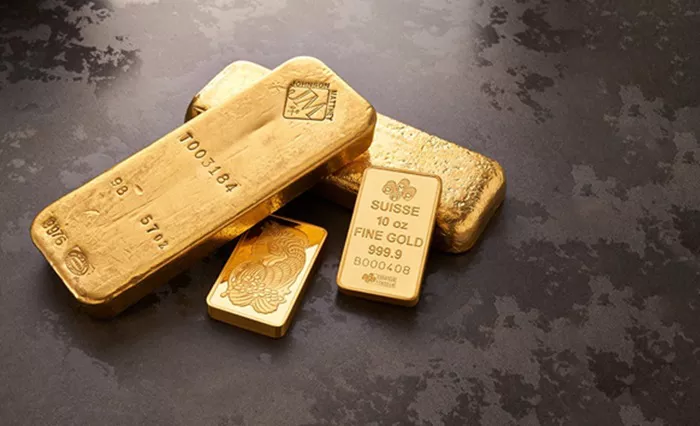Gold has long been a symbol of wealth and a valuable asset in various cultures around the world. Its value is determined by a complex interplay of market factors, including supply and demand, geopolitical stability, and economic conditions. Knowing the worth of 1 kilogram (kg) of gold can help individuals and investors make informed decisions about buying, selling, or investing in this precious metal. This article will explore how the value of 1 kg of gold is calculated, factors influencing its price, and its significance in different contexts.
Calculating the Value of 1 Kg of Gold
Gold Price Per Ounce: To determine the value of 1 kg of gold, it’s essential to know the current price of gold per ounce. Gold is traditionally measured in troy ounces, with one troy ounce equating to approximately 31.1035 grams. The value of gold is quoted on commodity markets and can fluctuate daily based on market conditions.
Conversion to Kilograms: Since there are 1,000 grams in a kilogram, and 1 troy ounce is approximately 31.1035 grams, 1 kg of gold is equivalent to approximately 32.1507 troy ounces. To calculate the value of 1 kg of gold, multiply the current gold price per troy ounce by 32.1507. For example, if the gold price is $1,800 per ounce, the value of 1 kg of gold would be approximately $57,270 (i.e., $1,800 x 32.1507).
Factors Influencing Gold Prices
Market Demand and Supply: The price of gold is heavily influenced by supply and demand dynamics. High demand for gold, whether for investment, jewelry, or industrial uses, can drive up prices. Conversely, a surplus in supply or a decrease in demand can lead to lower prices.
Economic Conditions: Economic factors such as inflation, interest rates, and currency fluctuations play a crucial role in determining gold prices. Gold is often seen as a hedge against inflation and currency devaluation, so during periods of economic uncertainty, demand for gold can increase, pushing up its price.
Geopolitical Stability: Gold prices are sensitive to geopolitical events and conflicts. Political instability, wars, and economic sanctions can drive investors to seek safe-haven assets like gold, increasing its price. Conversely, periods of geopolitical stability may lead to lower gold prices as investors shift to riskier assets.
Market Speculation: Speculative trading in gold futures and options can also influence its price. Traders and investors who speculate on the future price of gold can create volatility in the market, affecting the value of gold in the short term.
See also: How Much Is 1 Gold Coin Worth?
Historical Trends in Gold Prices
Gold prices have experienced significant fluctuations over time. Historically, gold has been a store of value and a safe haven during times of economic crisis. For example, during the global financial crisis of 2008, gold prices surged as investors sought to protect their wealth. In recent years, gold prices have been influenced by various factors, including central bank policies, technological advancements in mining, and changes in consumer behavior.
Long-Term Trends: Over the long term, gold prices have generally trended upwards, reflecting its status as a valuable asset. Historical data shows that gold has maintained its value over centuries, making it a reliable investment for those seeking to preserve wealth.
Short-Term Volatility: In the short term, gold prices can be highly volatile due to market speculation, geopolitical events, and economic data releases. Traders and investors need to be aware of these fluctuations when making decisions related to gold.
The Significance of 1 Kg of Gold
Investment: For investors, owning 1 kg of gold can be a significant financial commitment and a valuable asset. Gold is often used as a hedge against inflation and economic uncertainty, and owning a large quantity like 1 kg can provide a substantial store of value. Investors may choose to buy physical gold in the form of bars or coins or invest in gold-related financial products such as ETFs or futures contracts.
Industrial Uses: Gold is also used in various industrial applications, including electronics, dentistry, and aerospace. While 1 kg of gold may not be used directly in these industries, its availability and price can impact manufacturing costs and technological development.
Jewelry and Collectibles: In the jewelry industry, gold is a key material for crafting high-value pieces. The price of gold directly affects the cost of gold jewelry, including fine jewelry and collectible pieces. For jewelers and collectors, understanding the value of gold helps in pricing and valuing their products.
Cultural and Historical Value: Gold has cultural and historical significance in many societies. It is often used in ceremonial objects, awards, and religious artifacts. The value of 1 kg of gold can reflect not only its economic worth but also its cultural and historical importance.
Conclusion
The value of 1 kg of gold is determined by a combination of factors, including the current gold price per ounce, market demand, economic conditions, and geopolitical events. Understanding these factors can help individuals and investors make informed decisions about buying, selling, or investing in gold. Whether used for investment, industrial purposes, or cultural significance, gold remains a valuable asset with a significant role in the global economy. By keeping abreast of market trends and economic indicators, one can better assess the value of gold and make strategic decisions based on its current and potential future worth.
Related Topics:

